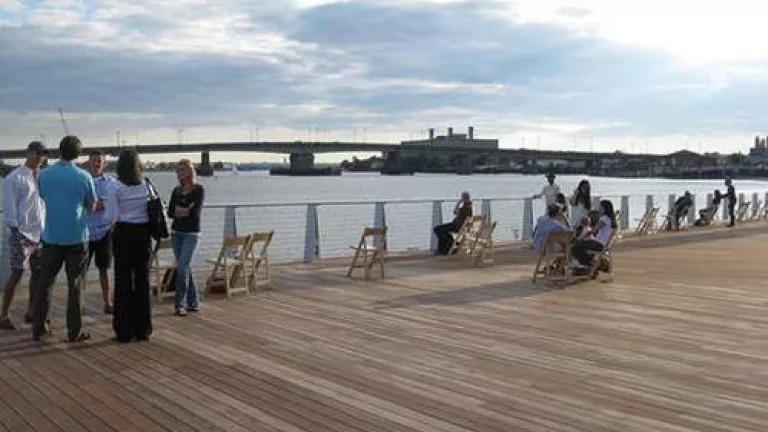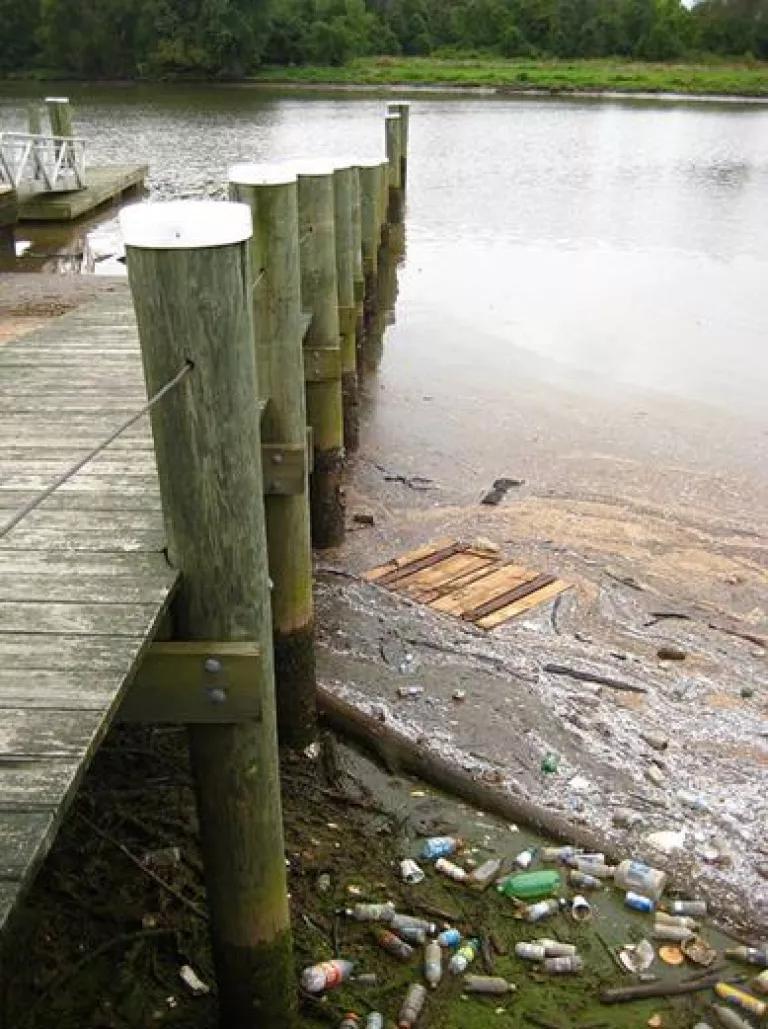When You Make a Mess, Clean It Up: The Federal Government Must Commit Resources to the Anacostia's Restoration

On Monday morning, I headed down to the beautiful new Yards Park on the Anacostia River along with a bunch of my colleagues and a few local and federal officials. We weren’t there to admire the park or the view of the river – though both are lovely. Instead, we were there to mark the release of a new report by local non-profit organization DC Appleseed, “A New Day for the Anacostia,” which makes recommendations for how to clean up the river.
As I listened to the speakers at the event, I couldn’t help but think about the potential benefits that the Anacostia has to offer people like me who live in the Washington, DC region. I could picture people boating and swimming in the river on a summer afternoon, or families fishing and watching wildlife from the river’s shores.
(Photo credit: Capitol Riverfront BID)
Yet the Anacostia isn’t currently living up to this potential. In fact, it’s one of the most degraded urban rivers in the entire country – it’s filled with trash, polluted by stormwater runoff, fouled by sewage overflows, and contaminated by toxic materials. It’s not safe for fishing, swimming, or boating. That’s a real shame.
One major challenge is that the District is one of over 700 communities, largely located in the Northeast and Great Lakes region, with a “combined” sewer system, meaning that sewage flushed from homes and businesses is carried by the same pipes that receive runoff from streets and other impervious areas when it rains. These systems were originally constructed many decades (in some cases over a century) ago, and are designed to allow the mix of raw sewage and runoff to overflow into our rivers when we have a significant enough rainfall. This is a serious pollution problem – according to EPA, these discharges can contain pathogens (including bacteria and viruses) that can cause disease, toxic chemicals, and – ewww – “floatables.” As documented in NRDC’s annual survey of beachwater pollution and beach closings and advisories, “Testing the Waters,” sewage discharges are an important cause of beach pollution.

(Photo credit: Anacostia Watershed Society)
Fortunately, DC Appleseed’s report provides some concrete suggestions as to how things can be turned around for the Anacostia. Most importantly, the report recommends that the federal government declare the river’s restoration a priority and lead a new pilot program that could be replicated for other polluted urban rivers across the country.
You might be wondering, why should the federal government get involved in the clean-up of the Anacostia? Well, DC Appleseed has four very good answers to that question:
- The federal government has been recommending that communities across the country adopt innovative techniques to curb water pollution, such as green infrastructure. The Anacostia is an ideal place to demonstrate these strategies, since a report was released last year listing thousands of candidate green infrastructure projects that are ready to be implemented here.
- The federal government has a unique responsibility to remedy the damage done to the Anacostia, both because of its historical actions in the watershed (including deforestation, weapons manufacturing, and installation of DC’s combined sewer system), and because it’s still one of the watershed’s largest tenants and sources of pollution. It’s just like my parents always taught me – when you make a mess, you should help clean it up.
- The Anacostia restoration will create jobs and economic investment. A clean, beautiful river will spur development along the waterfront in some of the DC area’s most economically distressed communities.
- Without federal involvement and coordination, the restoration will be done inefficiently, and will take much longer than it would with EPA’s help.
Sounds pretty convincing, right? Unfortunately, the federal government doesn’t seem to fully agree – at least yet. Last month, when the President and leaders in Congress negotiated a bill to fund the government through September, they actually reduced the federal payment to DC Water, which is the sewage authority for the District, and which has developed a plan to address the overwhelming majority of sewage overflows, called the “Clean Rivers Project.” For a fun overview, check out the mostly great video below, following a raindrop through the city sewers (I say only “mostly” because I think it could do a better job of highlighting the promise of green infrastructure, especially in light of pleas from NRDC and other local partners to better incorporate green infrastructure into the plan).
It’s not only disappointing that the feds are short-changing the District’s cleanup efforts, given the federal government’s responsibility, but it also highlights a flaw in the reasoning of those who think that cutting government spending is always good. Here, because somebody will have to pay the costs of addressing the city’s sewage overflow problems, the costs that the feds fail to pay will instead have to be paid by local ratepayers.
At the report release event on Monday, EPA and other federal officials made some nice speeches expressing their commitment to act as a full partner in the clean-up of the Anacostia. I am convinced that those expressions were heartfelt. But if DC Appleseed’s plan is to succeed – an outcome that would benefit everyone in the DC region – the federal government needs to put its money where its mouth is. Otherwise, those nice words are ultimately just words.

